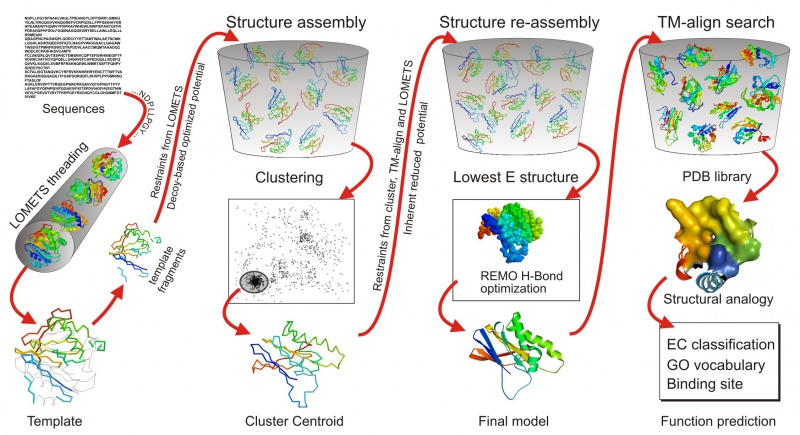Difference between revisions of "I-TASSER"
Jump to navigation
Jump to search
| Line 1: | Line 1: | ||
Welcome the I-TASSER tutorial page, a part of the Monmouth College Wiki. | Welcome the I-TASSER tutorial page, a part of the Monmouth College Wiki. | ||
| + | |||
| + | ===Introduction=== | ||
The official link to the I-TASSER website can be found [https://zhanglab.ccmb.med.umich.edu/I-TASSER/ here]. | The official link to the I-TASSER website can be found [https://zhanglab.ccmb.med.umich.edu/I-TASSER/ here]. | ||
| Line 8: | Line 10: | ||
[[File:I-TASSER-pipeline.jpg|800px]] | [[File:I-TASSER-pipeline.jpg|800px]] | ||
| + | |||
| + | ===Activity=== | ||
[https://zhanglab.ccmb.med.umich.edu/I-TASSER/example/ I-TASSER result example] | [https://zhanglab.ccmb.med.umich.edu/I-TASSER/example/ I-TASSER result example] | ||
Revision as of 14:10, 13 June 2019
Welcome the I-TASSER tutorial page, a part of the Monmouth College Wiki.
Introduction
The official link to the I-TASSER website can be found here.
The Wikipedia link can be found here.
- I-TASSER (Iterative Threading ASSEmbly Refinement) is a bioinformatics method for predicting three-dimensional structure model of protein molecules from amino acid sequences.[1] It detects structure templates from the Protein Data Bank by a technique called fold recognition (or threading). The full-length structure models are constructed by reassembling structural fragments from threading templates using replica exchange Monte Carlo simulations. I-TASSER is one of the most successful protein structure prediction methods in the community-wide CASP experiments.
